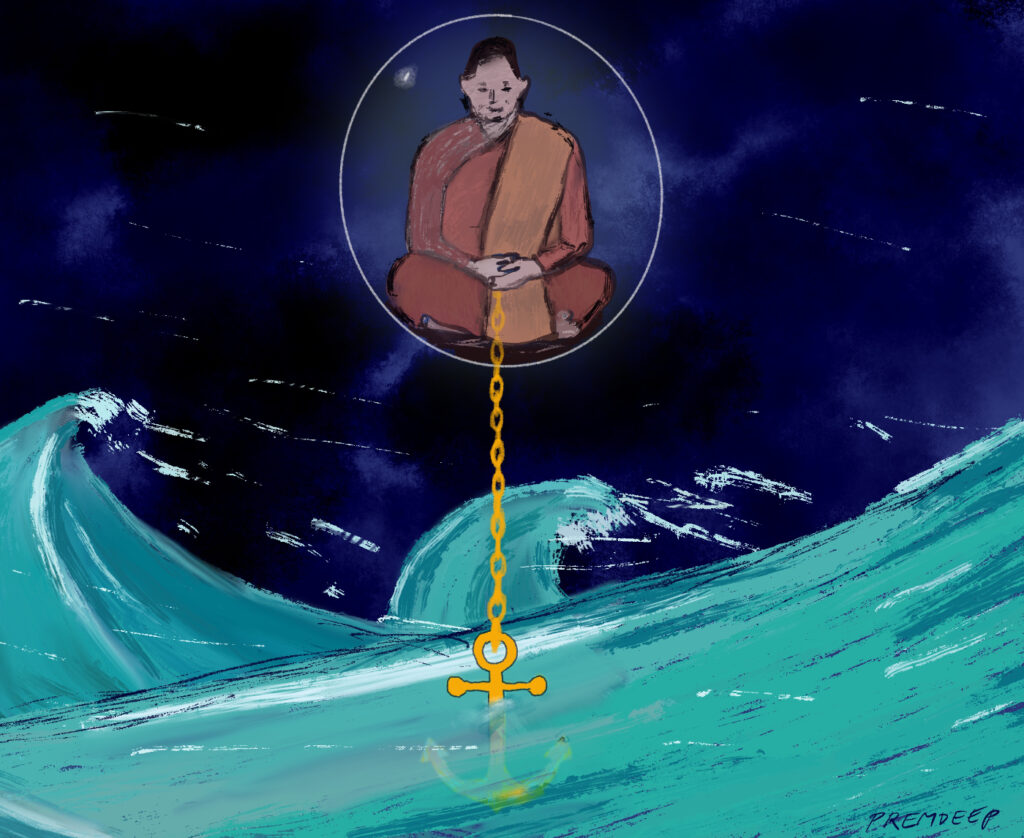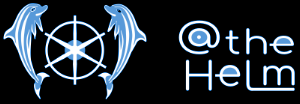It is July and I am in Greece aboard our sailing catamaran Yemaya. We are in port getting the boat ready for our next guests. As I look at the gently swaying railing of Yemaya, I think about how the principles of sea sailing apply squarely to the principles of life art and wisdom. The art of anchoring is a great example of this. If you can’t anchor you can’t sail. And equally true: if you can’t anchor you can’t live effectively. So I’m dedicating this blog to the breath: your anchor for difficult moments.
The breath as an anchor in a hospital
Years ago I was in the hospital. I had just had abdominal surgery and I was in a lot of pain. Because I didn’t tolerate the morphine. So I was given medication that was less analgesic. I felt like my abdomen was tearing apart.
And I fought and resisted the pain. “I wouldn’t last an hour longer,” I kept telling myself. But then I remembered that the doctor had said that the pain would last at least a week. Then I felt desperate and unable to cope with the pain.
After struggling so fiercely for a day, I happily remembered my zentraining. Just in time. In zentraining and mindfulness, we work a lot with the breath as an anchor.
So I took my attention away from my stressed thoughts and focused it on my breathing. And I felt my breath bring my attention down. Out of my head and into my body. The pain was still there. But I had stopped fighting it. As a result, I was no longer thinking about time but only about this moment. Thus I felt that I could bear the pain in this moment. And also the next moment and the moment after that. Until the week was over and the pain went away. In this way my breath made me suffer less and heal better. That’s what the breath as an anchor can do for you in difficult moments.
Why the breath as an anchor for difficult moments
Do you want to be safe in a bay with your ship? Then you need an anchor. Because if you don’t anchor your ship then your ship will be swept away by the waves and the wind. And your ship will crash on the rocks or the beach. Of course you don’t want that to happen. So anchoring is an essential skill for effective seamanship.
What seems so logical for sea sailing we often don’t do during difficult moments in our lives or work. We let ourselves get carried away with stressful events, difficult moments and runaway thoughts. Do you want to effectively lead your own life and work? Then use your breath as an anchor in difficult moments.
Because scientific research shows that anchoring on your breath does something to your brain. You give your brain a few seconds of rest. This makes your brain capable of a reset. The result is that you leave the survival mode. And that in turn leads to the solution-oriented and creative part of your brain getting more space. Allowing you to live and work more effectively. With less stress.

How do you use the breath as an anchor for difficult moments? Four steps
Step 1: Recognize and acknowledge that you experience a situation as difficult or stressful. This recognition ensures that you keep some distance from the problem and are not immediately sucked into it.
Step 2: Experience your emotions caused by the situation in your body. Where do you feel the problem resonating in your body? In your throat, shoulders, stomach or somewhere else? Acknowledging your emotions makes it easier to keep some distance from the situation. So you can more objectively observe what is happening.
Step 3: Focus your attention on the breath. Follow the in-breath and out-breath. Exactly as it is. No need to breathe deeper or slower. Just follow the breath with your attention. Allow your thoughts and emotions about the situation to drift past you like waves sliding past your boat. Focus on your breath. Not on the situation, your thoughts or emotions.
Step 4: Imagine that your breath is an anchor that slowly sinks deeper and deeper into the sea. On the surface of the sea there are waves. But the anchor sinks deeper and deeper. And in the depths, there are no waves and it is quiet. There the anchor roots itself into the ground. Firm and grounded. Wind and waves cannot endanger your boat. You are stable in the water. Well anchored.
After these 4 steps, you can move on with your day from a new perspective.
Want to know more about our At the helm method?
Would you like to know more about our At the helm trainings for personal leadership in life and work? Then book a training on our sailing catamaran Yemaya or follow our online training At the helm.

